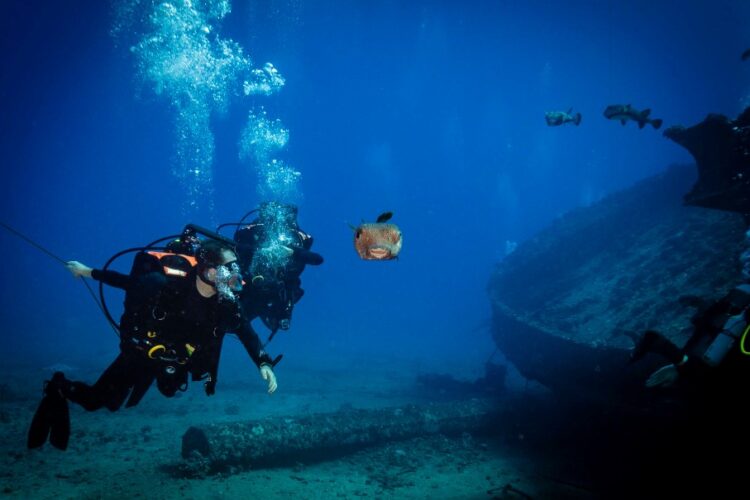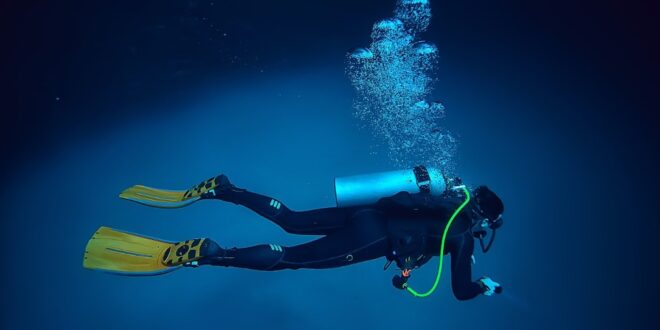The deep sea, a realm shrouded in mystery and teeming with enigmatic life forms, has long intrigued scientists and adventurers alike. Recent advancements in exploration technology have opened new windows into this uncharted world, revealing fascinating insights and unprecedented discoveries.
This article delves into twelve key aspects of deep-sea exploration technology, its significant findings, and the impact these have on our understanding of the ocean’s depths.
Advanced Submersibles
Modern submersibles, equipped with robust pressure-resistant materials, have enabled researchers to dive to extreme depths. The recent dive to the Mariana Trench, the deepest known point in the ocean, is a testament to these technological marvels, unveiling previously unseen species and geological formations.
Remote Operated Vehicles (ROVs)
ROVs are unmanned, remotely controlled vehicles that can venture into hazardous or inaccessible areas. They have been instrumental in studying hydrothermal vents, where they discovered unique ecosystems reliant on chemosynthesis rather than photosynthesis.
Underwater Drones
Similar to aerial drones, these autonomous vehicles can cover large areas, collecting data on water temperature, salinity, and marine life. This technology has led to the discovery of new coral reefs and underwater volcanic activity.
Project Management in Deep Sea Exploration

Effective project management utilizing a suite of team management tools is crucial in orchestrating complex deep-sea missions. It involves coordinating interdisciplinary teams, managing sophisticated equipment, and ensuring safety protocols. The success of projects like the Deepsea Challenger expedition highlights the importance of meticulous planning and coordination.
Sonar Technology
Sonar mapping has revolutionized our understanding of the ocean floor. It has led to the discovery of underwater mountains, canyons, and shipwrecks, offering new insights into marine geography and history.
Deep Sea Cameras and Lighting Systems
High-definition cameras and specialized lighting have enabled vivid imagery from the ocean’s depths, revealing the vibrant colors and bizarre shapes of deep-sea creatures, some of which were previously unknown.
Satellite Technology
Satellites offer a broad perspective of oceanic conditions. They have been pivotal in identifying large-scale phenomena such as ocean currents and temperature anomalies, contributing to our understanding of climate change impacts on marine environments.
Nanotechnology in Sensors
The application of nanotechnology in sensors has enhanced the sensitivity and precision of oceanographic instruments. These advanced sensors can detect minute changes in the ocean’s chemical composition, aiding in pollution monitoring and the study of ocean acidification.
Artificial Intelligence (AI) and Machine Learning
AI has been used to analyze vast amounts of oceanographic data, identifying patterns and trends that would be impossible for humans to discern. This has led to breakthroughs in predicting marine species migration and changes in ocean ecosystems.
Deep Sea Mining Technology
While controversial, deep-sea mining technology has made it possible to extract mineral resources from the ocean floor. This has opened up debates about the ecological impacts and the potential for new resources.
Bioprospecting and Pharmaceuticals

The deep sea is a treasure trove of unique organisms that produce novel bioactive compounds. These discoveries have potential applications in developing new pharmaceuticals and biotechnologies.
Educational Outreach and Citizen Science
Advancements in technology have also enabled greater public engagement in deep-sea exploration. Through virtual reality and online platforms, the public can experience the depths of the oceans, fostering a greater appreciation and understanding of this mysterious realm.
Additional Insights
- Technology integration ─ Combining various technological tools and methods to enhance deep sea exploration efficiency and effectiveness. The key is to ensure seamless operation and data synergy among different systems.
- Sustainability concerns ─ Addressing environmental impacts of deep-sea exploration, such as habitat disruption and pollution. Essential to develop and follow guidelines that minimize ecological footprints.
- International collaboration ─ Fostering partnerships across countries for shared resources, knowledge, and funding. Encourage open communication and data sharing to advance global understanding of the deep sea.
- Data management ─ Efficient handling, storing, and analyzing of vast amounts of oceanographic data. Implement robust data infrastructure and adopt standardized formats for easy access and interpretation.
- Biodiversity preservation ─ Protecting the diverse life forms in the deep sea from potential harms of exploration and exploitation. Establish protected areas and monitor activities to ensure minimal disturbance to marine life.
- Ethical considerations ─ Upholding responsible practices in exploration, including respecting marine life and avoiding unnecessary harm. Develop a code of ethics for researchers and organizations involved in deep-sea exploration.
- Legal frameworks ─ Adhering to international laws and regulations governing deep sea exploration and resource exploitation. Stay updated with legal standards and obtain necessary permits and approvals.
- Climate change correlations ─ Studying how deep-sea ecosystems are affected by climate change and vice versa. Utilize deep sea data to enhance climate models and predictions.
- Deep sea conservation strategies ─ Developing and implementing plans to protect deep-sea environments. This includes establishing marine protected areas and promoting sustainable exploration practices.
- Technological limitations and challenges ─ Recognizing and addressing the constraints of current technology in exploring extreme ocean depths. Focus on innovation and continuous improvement of exploration tools and methods.
- Economic implications ─ Understanding the financial aspects of deep-sea exploration, including costs, funding sources, and potential economic benefits like mineral extraction. Balance economic interests with environmental preservation.
- Public perception and media influence ─ Managing how deep sea exploration is presented to and perceived by the public. Use media to educate and raise awareness about the importance and challenges of exploring the deep sea.

Conclusion
The exploration of the deep sea, fueled by cutting-edge technology, has not only expanded our scientific knowledge but has also raised important questions about environmental stewardship, ethical practices, and the future of ocean exploration.
As we continue to probe the depths of our oceans, it is imperative to balance the quest for discovery with the responsibility to preserve this largely unexplored and fragile frontier.
 Hi Boox Popular Magazine 2024
Hi Boox Popular Magazine 2024



